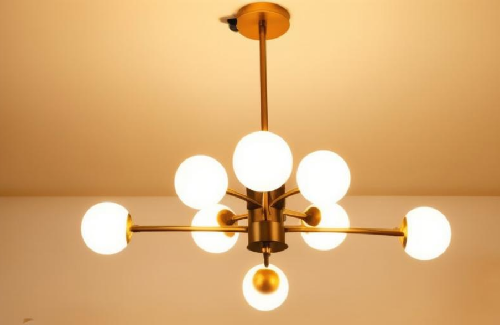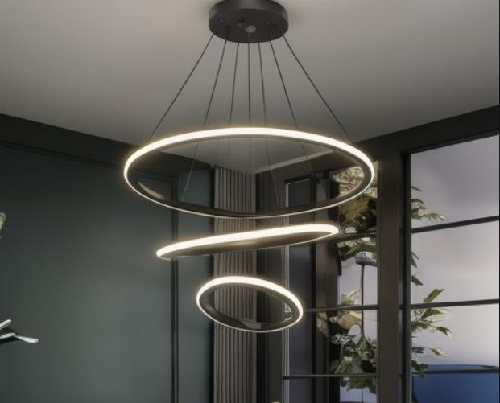Choosing lighting for a new home is a crucial part of the decoration process. Good lighting can enhance the overall atmosphere of a room, making it warmer and more comfortable. So, how should one select lighting for a new home?
1. Room Size and Functional Needs
When choosing lighting for a new home, the first consideration should be the size of the room and its functional needs. Different types of rooms require different types of lighting to meet everyday use. For example, the living room needs a bright main light or chandelier, while the bedroom may need soft bedside lamps or wall lights to create a romantic atmosphere. A study might require focused table lamps or spotlights to provide sufficient light. Additionally, the size of the room will affect the size and number of light fixtures to choose from; overly large or small fixtures can create visual disharmony. Therefore, it is essential to determine the type and size of lighting fixtures based on the room's size and functional requirements.

2. Decoration Style and Personal Preferences
The decoration style of the new home is also an important consideration when selecting lighting. Different styles require different types of fixtures for optimal pairing; for instance, a minimalist modern style might suit simple, linear chandeliers or wall lights, while an ornate classical style may call for luxurious crystal chandeliers and wall sconces. Thus, when choosing lighting for a new home, it's vital to select fixtures that align with the room's decoration style. Additionally, personal preferences greatly influence lighting choices, so the appearance and color coordination of the fixtures should reflect one’s aesthetic sensibilities.

3. Light Source Type and Color Temperature Selection
There are various types of lighting fixtures on the market, each with distinct characteristics. Depending on actual needs and personal preferences, one can choose from different light sources, such as LED lamps, incandescent bulbs, or energy-saving lamps. LED lighting is currently a popular choice due to its energy efficiency, environmental friendliness, and long lifespan. Furthermore, the color temperature of the lighting should be selected according to the functions of the different rooms; brighter color temperatures may be suitable for living rooms and dining areas, while softer color temperatures might be ideal for bedrooms and studies.
4. Material and Quality Inspection
The material and quality of lighting fixtures are vital factors that influence their lifespan and aesthetic appeal. A high-quality light fixture can last longer and will typically be more visually appealing. When purchasing lighting for a new home, it is essential to pay attention to the material and quality of the fixtures. Generally, fixtures made of metal, glass, or crystal are more durable and aesthetically pleasing. Additionally, brand reputation and after-sales service are considerations to keep in mind, as renowned brands often offer better quality and customer support.

5. Energy Efficiency Label and Safety
When selecting lighting for a new home, attention should be given to the energy efficiency label and safety. The energy efficiency label can help one understand the energy consumption of the fixtures; choosing those with high energy efficiency ratings can help save on electricity. Moreover, the safety of the fixtures is crucial; a qualified fixture should comply with national safety standards to prevent safety hazards due to subpar quality.

In summary, we have introduced how to choose lighting for a new home. Selecting lighting not only fulfills everyday illumination needs but also enhances the overall ambiance and aesthetics of a room. By considering factors such as room size and functional requirements, decoration style and personal preferences, light source type and color temperature, material and quality inspection, as well as energy efficiency and safety, one can choose the lighting that best suits their needs.



